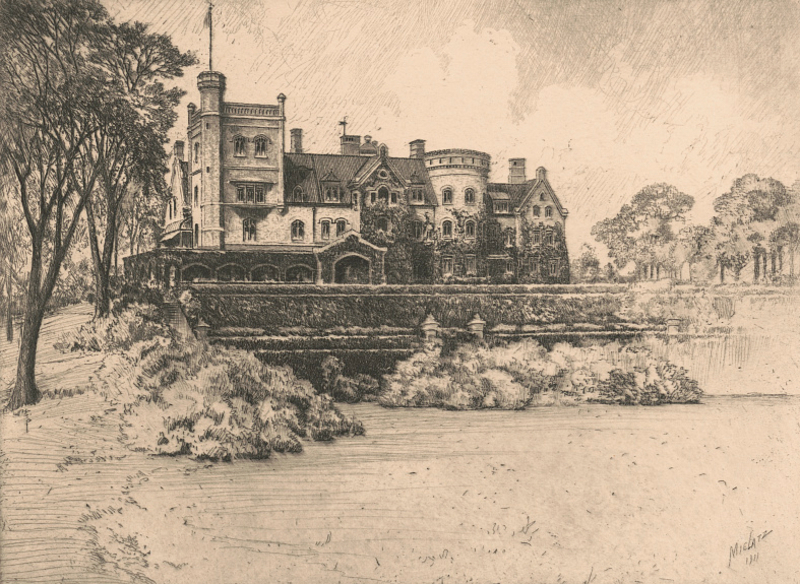2. Rockwood Hall, Sleepy Hollow

The original Rockwood Hall in Sleepy Hollow, New York was built by wealthy merchant Edwin Bartlett in 1848. Bartlett constructed a massive English Gothic-style castle made of locally quarried stone, complete with a turret, pointed arched windows, and parapet. In 1886, the property was acquired by William Rockefeller, brother of Standard Oil founder John D. Rockefeller, for $150,000. He quickly got to work making the estate as large and as luxurious as possible.
Rockefeller expanded the bucolic grounds of the estate from 200 to a whopping 1,000 acres. He expanded the castle as well. According to the New York State Parks Department, it’s unclear if Rockefeller renovated the existing structure or tore it down and started from scratch. Whatever his approach, the end result was a 204-room mansion that was surpassed in size only by Biltmore in Asheville, North Carolina. Biltmore was the largest private dwelling in the United States and belonged to George Washington Vanderbilt II.
Rockefeller’s renovations were said to cost over $3 million. Features of the home included a fireplace in every bedroom, a music room, a library, and a conservatory. The grounds were landscaped by Frederick Law Olmsted, landscape architect of Prospect and Central Parks, and featured rare trees such as Golden Oaks, Weeping Beeches, and Pink Horsechestnut. Six miles of paved carriage roads snaked through the grounds. Outbuildings included “a three-story coach stable, a carpenters shop, a paint shop, a farm barn, a hennery, 17 greenhouses and a 4-acre outdoor nursery containing more than 1,000 rare and valuable trees and shrubs.” There was also a boathouse and private dock.
Rockefeller lived at the massive estate until his death in 1922. His heirs sold the mansion to a group of investors that created Rockwood Hall, Inc. The corporation converted the home into a country club with an 18-hole golf course, but it went bankrupt by 1936. John D. Rockefeller, Jr was able to acquire the estate in bankruptcy court. Having no use for the buildings on the property, he had them demolished from 1941 to 1942. He left the land to his son Laurance S. Rockefeller, who donated a large part of the property to New York State in 1999. Since then, the donated grounds have been part of the Rockefeller State Park Preserve which is open to the public. Rockefeller’s former carriage trails are now trails for walkers and hikers and the occasional horseback rider. Visible remnants of the main house’s foundation and a gatehouse on Route 9 can still be seen.





